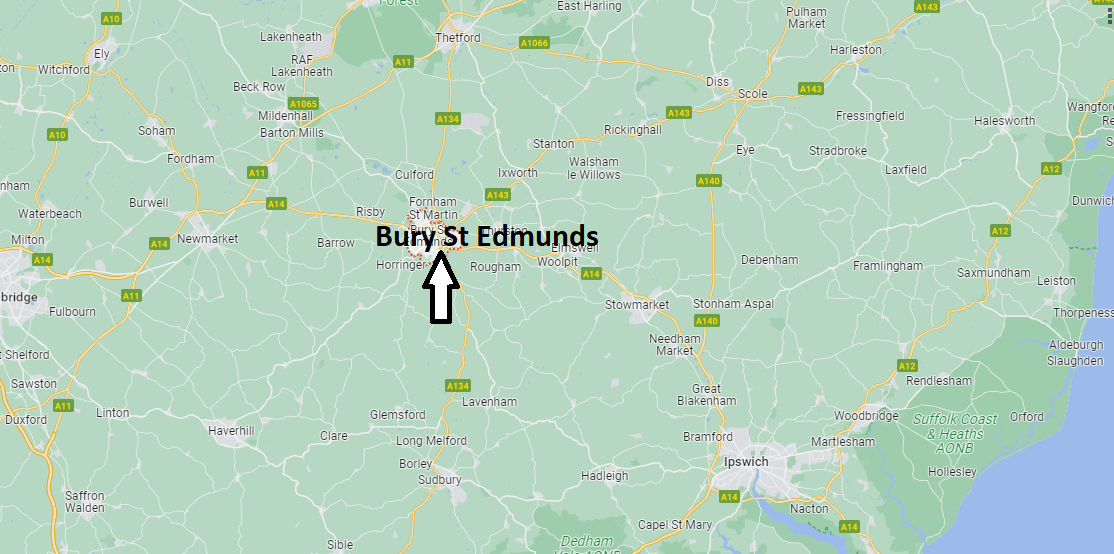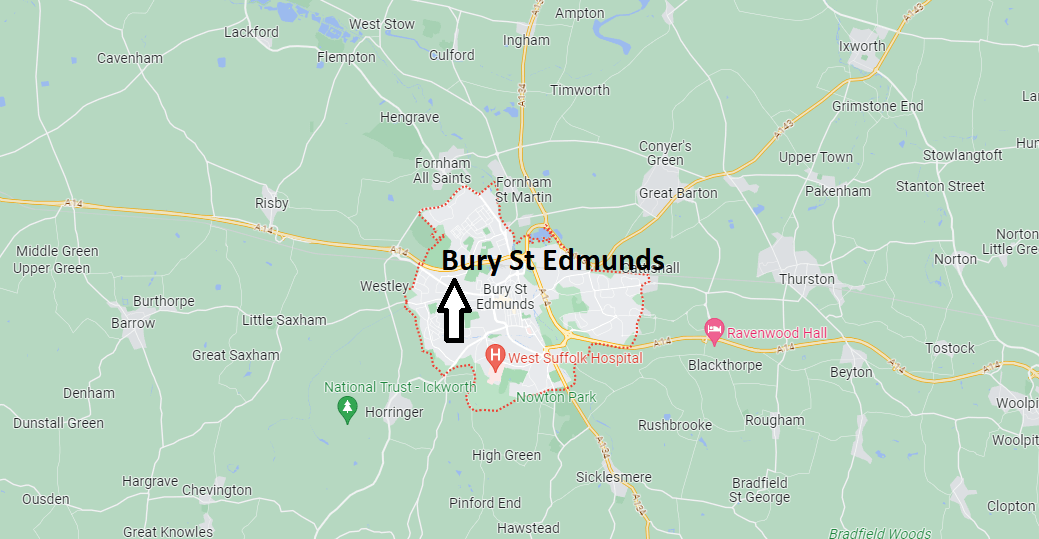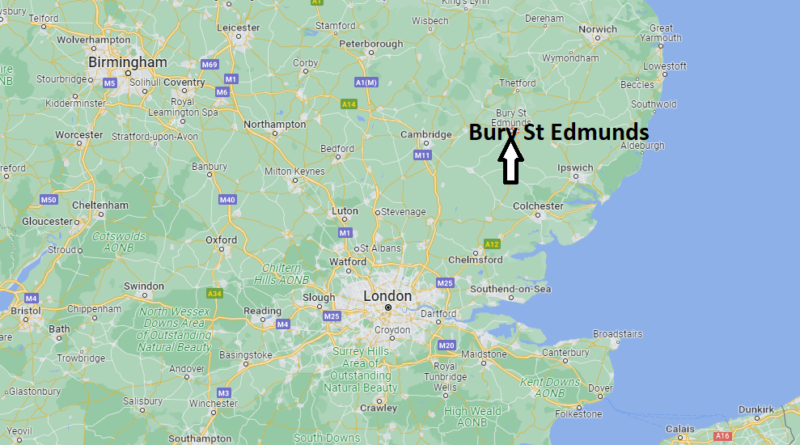Where is Bury St Edmunds Located? Bury St Edmunds Map
Bury Saint Edmunds is located in the County of Suffolk, about an hour’s drive north of London.
Like Compiègne, it is an average city, rich in historical memories: for example, the cathedral and the remains of what was one of the most important abbeys of the kingdom. There are also several historical and archaeological museums. Finally, it is an active city, welcoming visitors to its many shops, pubs, restaurants and beautifully flowered parks.

The surroundings of Bury Saint Edmunds
The region has many picturesque villages, for example, Lavenham and its half-timbered houses, prestigious old mansions such as Ickworth House, very often open to visitors as part of the National Trust. Another nearby center of interest: the city of Newmarket and its National Stud (National Stud), entirely dedicated to the horse. We should also mention the curious reconstituted Saxon village of West Stow. Finally, outside Suffolk but very close, Cambridge which does not need to be presented.

What county is Bury St Edmunds in UK?
Suffolk is the county of typical villages and ancient monuments. The history of this region is also closely linked to the Viking and Anglo-Saxon invasions. We had already touched on the subject a little with the Sutton Hoo archaeological site, one of the largest archaeological sites in the country.
Bury St Edmunds was recommended to me as a city: “of independent shops, old traditional town center and beer” (there is the Greene King Brewery, the largest British brewery in the country).
Country : United Kingdom
Population: 36,000 inhabitants
Twinning signed in: 1967

In the very center of East Anglia, the city was established by the Saxons in the tenth century and its growth was concentrated around the Abbey of St Edmund. The abbey grew to become the fourth largest monastery in Europe and an important pilgrimage site before its dissolution in 1539, since it became a source of quarry stone for local builders, so that only vestiges remain. Today, the ruins of the abbey are part of the abbey gardens, a pleasant public park, but the medieval heritage of the city is still visible in a large part of the street plan of the city center which has not changed for 1000 years.
The town developed considerably after the dissolution of the abbey thanks to the wealth of agriculture which has always been abundant in West Suffolk. Most of the buildings in the “historical center” of the city are medieval half-timbered buildings hidden behind Georgian brick facades, added as status symbols by the rich merchants of the time. Some of the largest public buildings – for example the Robert Adam Art Gallery, originally built as the Corn Exchange, and its Victorian counterpart – directly reflect the agricultural heritage of the region; a legacy that continues to this day with the presence of the Greene King Brewery in the center of the city and a large British sugar factory on the outskirts. The town has always been famous for its markets – originally a twice-weekly provisions market and a weekly cattle market but now only the provisions market. Bury is also famous for its floral ornaments, and in recent years has won many awards for them, including the prestigious title “Nations in Bloom”, contested by cities around the world.
Due to its position at the “crossroads of East Anglia” (as the city is known), Bury is a popular base for exploring this entire region of England. It is not a big city in itself, so it is easy to explore it on a day trip or a relaxing weekend/short break; however, it is within reach of many interesting places such as Newmarket, Cambridge, Lavenham, Long Melford, Ipswich and the Suffolk and Norfolk coasts – and is therefore frequently used as a base for longer holidays.
What is special about Bury St Edmunds?
Why are there so many Americans in Bury St Edmunds?
Is Bury St Edmunds affluent?

